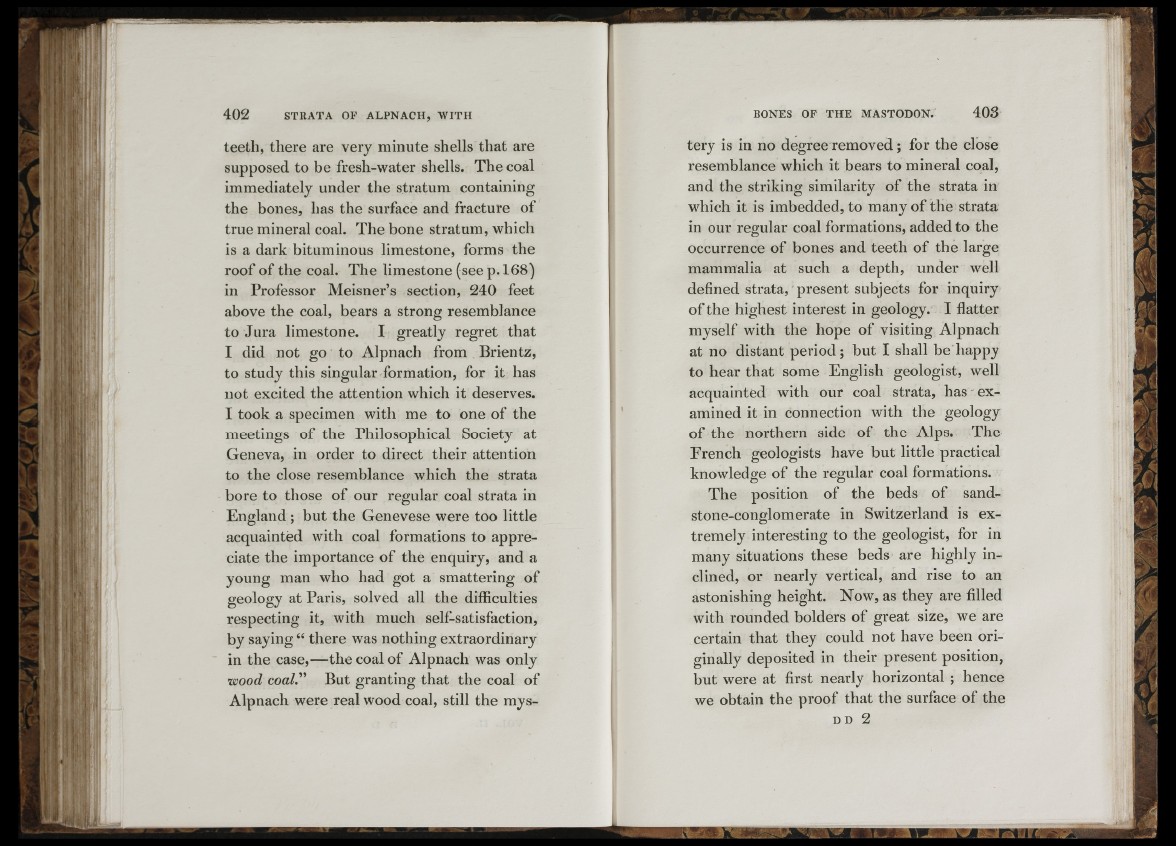
i { I
teeth, there are very minute shells that are
supposed to be fresh-water shells. The coal
immediately under the stratum containing
the bones, has the surface and fracture of
true mineral coal. The bone stratum, which
is a dark bituminous limestone, forms the
roof of the coal. The limestone (seep. 168)
in Professor Meisner’s section, 240 feet
above the coal, bears a strong resemblance
to Jura limestone. I greatly regret that
I did not go to Alpnach from Brientz,
to study this singular formation, for it has
not excited the attention which it deserves.
I took a specimen with me to one of the
meetings of the Philosophical Society at
Geneva, in order to direct their attention
to the close resemblance which the strata
bore to those of our regular coal strata in
E n g lan d ; but the Genevese were too little
acquainted with coal formations to appreciate
the importance of the enquiry, and a
young man who had got a smattering of
geology at Paris, solved all the difficulties
respecting it, with much self-satisfaction,
by saying “ there was nothing extraordinary
in the case,—the coal of Alpnach was only
wood coal." But granting that the coal of
Alpnach were real wood coal, still the mystery
is in no degree removed; for the close
resemblance which it bears to mineral coal,
and the striking similarity of the strata in
wffiich it is imbedded, to many o f the strata
in our regular coal formations, added to the
occurrence of bones and teeth of the large
mammalia at such a depth, under well
defined strata, present subjects for inquiry
of the highest interest in geology. I flatter
myself with the hope of visiting Alpnach
at no distant period; but I shall be happy
to hear that some English geologist, well
acquainted with our coal strata, has examined
it in connection with the geology
of the northern side of the Alps. The
French geologists have but little practical
knowledge of the regular coal formations.
The position of the beds of sandstone
conglomerate in Switzerland is ex-
tremely interesting to the geologist, for in
many situations these beds are highly inclined,
or nearly vertical, and rise to an
astonishing height. Now, as they are filled
with rounded holders of great size, we are
certain th at they could not have been originally
deposited in their present position,
but were at first nearly horizontal ; hence
we obtain the proof that the surface of the
D D 2